Grapes
-
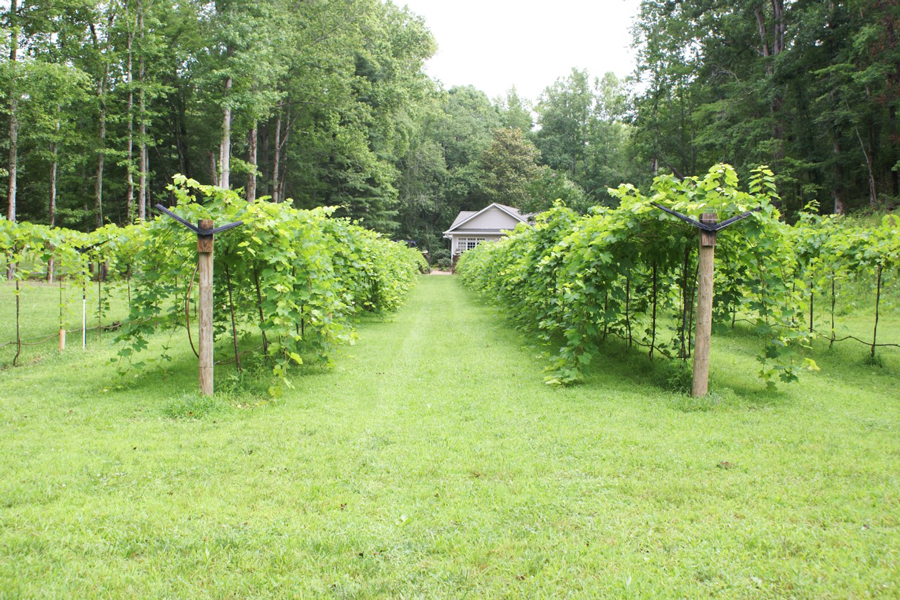
There are two main trellising system categories: divided and single canopy. Jerry Watson, a grape grower and owner of Austin County Vineyards in Cat Spring, Texas, developed the divided canopy “Watson System” in 2002 to solve some issues he was having with bunch rot management and harvest inefficiency in his ‘Blanc Du Bois’ and ‘Lenoir’ vineyards. By adding a series of cross arms and catch wires to his high wire system, Jerry was able to improve spray penetration to the fruit zone and increase picking efficiency at harvest. The Watson hardware and wires separate clusters from the canopy foliage and limit cluster touching compared to a standard, single high wire system. The Watson system has since been employed in the Southeastern U.S. and can be found as far west as California. The Watson system is currently used for training hybrid and trailing grape cultivars such as, but not limited to, ‘Blanc du Bois’, ‘Norton’, ‘Lenoir’, ‘Lomanto’, ‘Crimson Cabernet’, and ‘Villard blanc’. A high wire-trained vineyard, such as those planted with ‘Chambourcin’, ‘Seyval blanc’, ‘Vidal blanc’, ‘Traminette’, and other cultivars could be retrofitted to Watson training with success. Future research will evaluate hybrid and Vitis vinifera cultivars that have yet to be evaluated for training on the Watson system.
Paula Burke, Rachel Itle, Jason Lessl, and Sarah Lowder
|
-

This is a new annual guide for managing diseases, insects, weeds, and wildlife in bunch grapes in the Southeast. This regional integrated pest management guide provides recommendations based on information from the manufacturer’s label and performance data from research and Extension field tests. This publication is intended for use only as a guide. Specific rates and application methods are on the pesticide label, and these are subject to change at any time.
Phillip M. Brannen
|
-
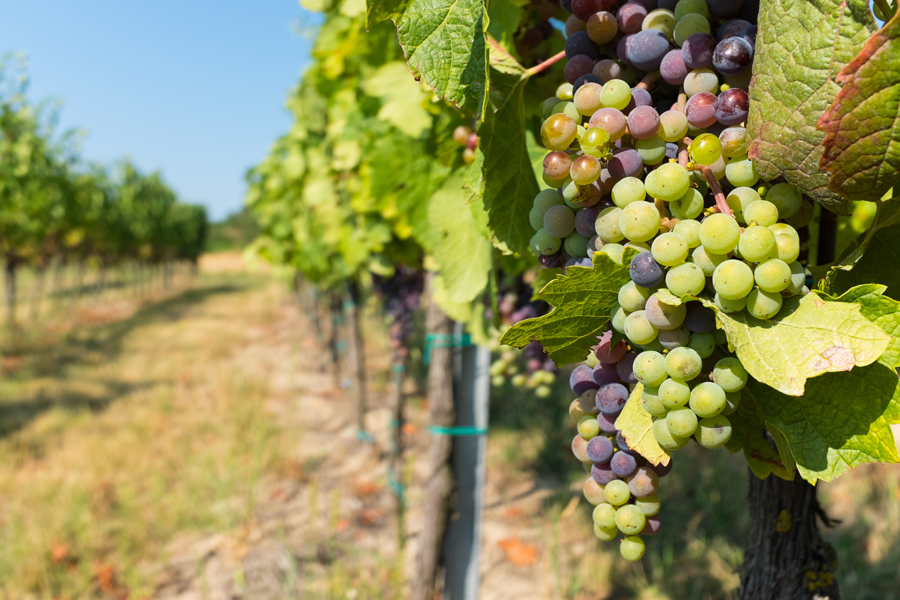
There are many ways to manage grapevine growth, and many grape-growing regions implement unique and preferred training methods. Vine growth management is achieved by applying a trellising system, which is a framework of metal cross arms, wires, and support posts that are used to direct grapevine vegetation to maximize fruit quality and production. Trellising and pruning combinations will sometimes be referred to as “training” systems, but “trellising,” “training,” and “pruning” are not interchangeable terms. Understanding the different forms of trellising and pruning can be a challenge for new growers. The goal of this publication is to provide a general introduction to some of the more common trellising and pruning terms used to describe grapevine management systems. There is a glossary at the end of this publication.
Sarah Lowder
|
-
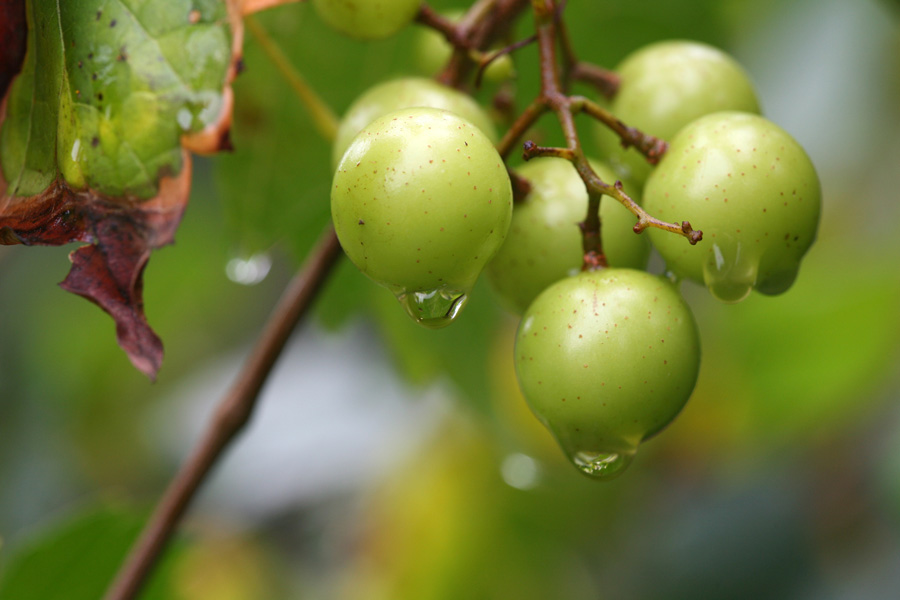
C 949
Home Garden Muscadines
Muscadines are truly a fruit for the south. Although muscadines can be grown successfully in most parts of the state, they are best adapted to the Piedmont and Coastal Plain areas.
Bob Westerfield
|
-
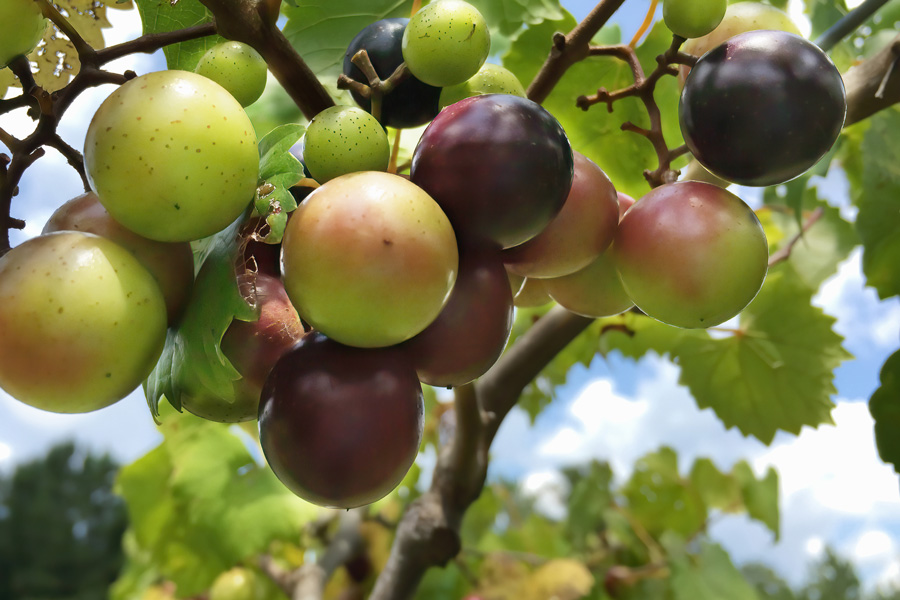
This 2023 update to the regional integrated pest management guide provides recommendations for muscadine grape production in the Southeastern U.S. Recommendations are based on information from the manufacturer’s label and performance data from research and Extension field tests. This publication is intended for use only as a guide. Specific rates and application methods are on the pesticide label, and these are subject to change at any time.
Phillip M. Brannen
|
-

C 1151-SP
Manejo del Viñedo
Este póster del manejo del viñedo está basado en la fenología de la planta y proporciona una referencia para las buenas prácticas de manejo de las enfermedades y los insectos de la vid en un formato atractivo y digerible. Las prácticas vitícolas optimizan la salud, la rentabilidad y la sostenibilidad de los viñedos al mismo tiempo que mejoran la cantidad y calidad del cultivo. Al igual que el manejo de plagas, las prácticas vitivinícolas deben implementarse de manera oportuna a lo largo de la temporada de crecimiento de la planta para maximizar la eficiencia de la práctica y la ganancia de beneficios. El control de enfermedades en las uvas es crítico, ya que las uvas son susceptibles a una amplia gama de patógenos. La implementación de prácticas culturales oportunas y adecuadas ayudará enormemente a eliminar las enfermedades. Además, las uvas, más que muchos productos hortícolas, requieren programas de fungicidas agresivos durante todo el año para mantener la salud de la vid. El manejo integrado de plagas en el viñedo combina una variedad de técnicas y herramientas para controlar las plagas. Comienza identificando correctamente al insecto y comprendiendo su tiempo y actividad dentro de un cultivo a lo largo de la temporada. El monitoreo y la evaluación de la abundancia de plagas identificadas y las lesiones en los cultivos pueden ayudar a determinar el método correcto para el manejo efectivo de la plaga.
Phillip M. Brannen and Brett R Blaauw
|
-

C 1151
Viticulture Management
This phenology-based viticulture management poster provides a reference for sound viticultural, disease, and insect management practices in a digestible format. Viticultural practices optimize vineyard health, profitability, and sustainability and improve crop quantity and quality. Like pest management, viticultural practices should be implemented in a timely fashion throughout the growing season to maximize practice efficiency and benefit gain. Disease control in grapes is critical, as grapes are susceptible to a wide range of pathogens. Implementing timely and adequate cultural practices will greatly help to suppress diseases.
Phillip M. Brannen and Brett R Blaauw
|
-
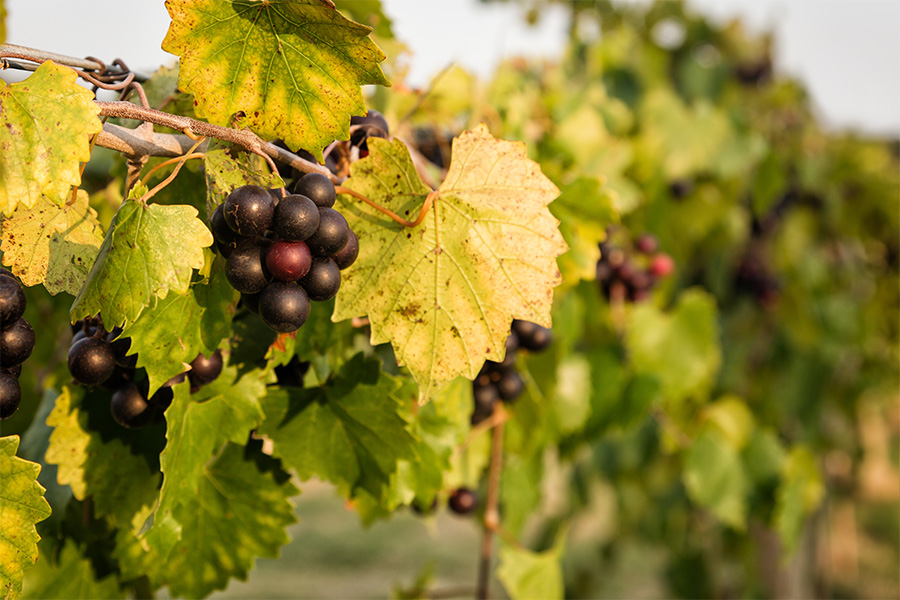
C 1268
Pruning Muscadine Grapes
Many gardeners don’t realize how vigorously muscadines and grapes must be pruned each season in order to ensure good production. Quality equipment and care also is essential to maintain healthy plants. This video covers the basics of how to properly prune muscadines and bunch grapes. Correct pruning methods are essential for strong fruit production and must be performed annually at the proper time. This video covers timing, tools, and techniques.
Bob Westerfield
|
-

Shoot thinning is the first seasonal canopy management practice in wine grape vineyards, but shoot thinning is not implemented in muscadine vineyards. Failure to shoot thin results in a highly congested canopy characterized by reduced air flow, high humidity, and extended damp periods. Muscadines can generally tolerate such conditions without adverse effects. Wine grapes grown in crowded fruit zones, however, will experience excessive disease incidence and severity—especially in the humid Southeastern U.S. Shoot thinning is therefore a necessary canopy management practice in wine grape vineyards in Georgia and other Southeastern states.
Timothy Coolong and Cain Hickey
|